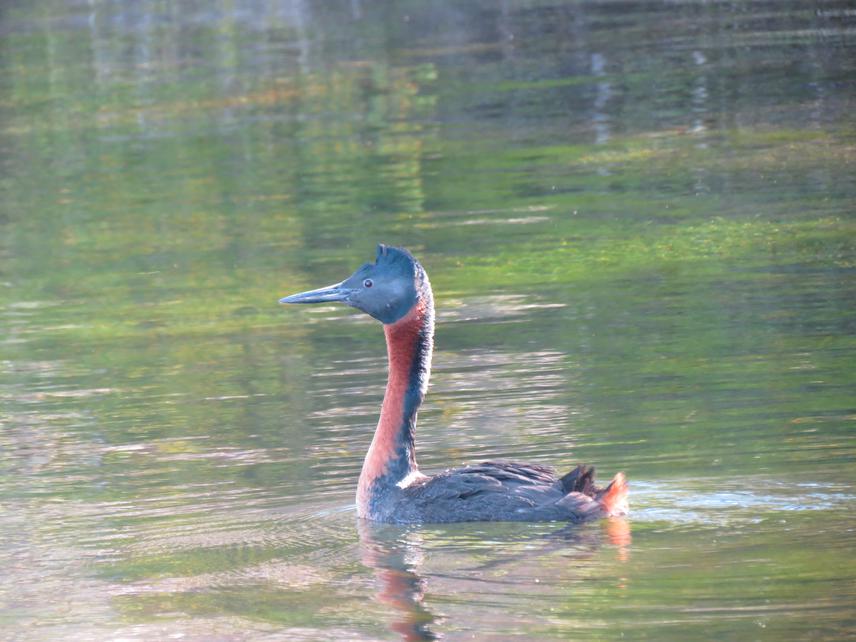Juan Manuel Girini
We will provide conclusive information about the impact of mink on birds in north-western Patagonia and assess responses of bird and mink populations to mink removal in Lanín National Park. With the information generated, adding the gained experience, we’ll build up protocols to monitor bird and mink populations by park rangers and local people, raise awareness about the mink threat to native birds, and develop a guide to select priority and adequate sites for conservation through mink control.

The Great Grebe, a native prey of American mink, defending their territory in Quillén lake, Lanín National Park. ©Dario Barroso, a national park ranger.
Southern South American Temperate Forests represent an Endemic Bird Area, with habitat loss and urgent priority of conservation. The newcomer American mink, generalist predator introduced in several regions of the world, is invading Patagonia and represents a new threat for native waterfowls, like the specialized Torrent duck, the near threatened Spectacled teal and the critically endangered Hooded grebe. Furthermore, endemic terrestrial birds inhabiting forests, like the Magellanic woodpecker and Thorn-tailed Rayadito, are predated by this species. This project will be performed in Lanín National Park (LNP), in north-western Patagonia), where is the northernmost front of the mink current spread in Argentina.
First of all, we’ll provide conclusive information about impact of mink on birds by surveying waterfowl and terrestrial bird populations, and study the mechanism of impact by mapping reproductive waterfowl territories in sites with and without minks. Thus, next decisions of conservation will rely on reliable information.
Several Patagonian protected areas are carrying out mink control, but these management practices don’t conduct monitoring nor success evaluation in a systematic way. We’ll assess success of mink removal in LNP focusing on waterfowl and mink populations. In connection with this point, we’ll develop and implement standardized protocols to monitor bird and mink populations in forests and wetlands. In order to achieve this objective in a long-lasting way, we’ll develop a regional workshop to tune such protocols and train people belonging to key government institutions, non-governmental organizations (ONG) and social groups.
Some native birds threatened by mink are considered in stories and worldview of the aboriginal communities from north-western Patagonia, or are coveted by every tourist that bird watch there. Because people and political decision-makers ignore potential ecological and socio-economic impact of this invasive mammal, we’ll develop posters and leaflets in order to increase awareness and disseminate information.
Governmental and non-governmental organizations are expanding mink removal to different areas from Patagonia, but there aren’t unified criteria to select the next sites for management. On the basis of the information provided by this project, adding the experience gained by technicians and researchers in overall Patagonia, we’ll develop and implement a guide to select adequate and priority sites for mink removal and biodiversity conservation. To reach this aim, we’ll use a Geographical Information System applying criteria for assessment to each potential site along LNP.